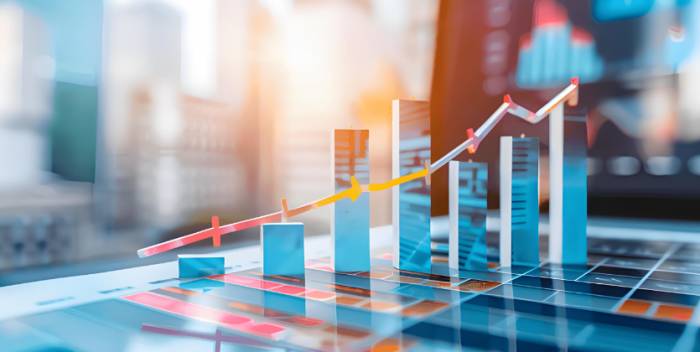Why is the US Dollar Rising Against Seasonal Trends?
The recent performance of the US dollar has caught the market somewhat off guard. The fourth quarter is typically a period of seasonal weakness for the dollar, yet since October, the currency has experienced a rapid rise. From an interest rate perspective, US Treasury yields have seen a comprehensive rebound recently, with expectations for significant rate cuts by the Federal Reserve cooling, providing a footnote to the dollar's strength. The minutes from the Fed's latest meeting were released overnight, revealing that although only one voting member opted for a 25 basis point rate cut, there were many differing opinions on the extent of the cut during the discussion. The main reason for supporting a 25 basis point cut was the belief that inflation remains somewhat elevated, economic growth is steady, and unemployment is still low. Some participants indicated that they would prefer to lower the target range for the policy rate by 25 basis points at this meeting. Additionally, another reason for supporting a 25 basis point cut is that it serves as an initiation of a rate-cutting cycle, emphasizing policy signaling while also appearing more prudent. Following the release of these minutes, US Treasury yields, which were already on an upward trend, rose further, with both 2-year and 10-year yields firmly holding above the 4% mark.
Comparing across currencies, there are signs that the interest rate differential between the US dollar and the euro could widen further. At the same time, although the euro has started to weaken, it does not seem as weak as the differential might suggest. From this perspective, the euro could weaken further. In other words, the dollar has further upward momentum.
The factors influencing the US dollar primarily come from two aspects. First, the US economy has performed significantly better than expected, especially after the release of the September non-farm payrolls data, which further reduced market expectations for rate cuts within the year. Before the September rate cut, concerns about the US economy falling into a recession were rampant, leading to the belief that the Federal Reserve would cut rates rapidly. However, with the release of a series of data—especially non-farm payrolls and GDPNow—investors began to believe that the probability of a "soft landing" for the US economy was increasing.

Another factor is that the market had previously over-bet on rate cut trades. At the beginning of rate cut trades, a large accumulation of positions would lead to a rapid decline in interest rates, but such trades, if overly concentrated, could bring about a significant backlash effect when the trade reverses. Of course, it is difficult for the market to judge whether trading positions are overly crowded, but from a risk-reward perspective, increasingly lower US Treasury yields also imply a lower risk-reward ratio. Especially considering that the 2-year US Treasury yield has consistently failed to break through the key 3.5% threshold, market disappointment has begun to spread, leading the 2-year US Treasury yield to directly target the 4% level.
External factors contributing to the rise in US Treasury yields include the upward movement in crude oil prices due to conflicts in the Middle East, which is expected to be reflected in the US CPI data. Since CPI is monthly data, if this month's figures exceed expectations, the psychological impact on the market will last for a while. Another external factor affecting US dollar interest rates is the continuous introduction of large-scale economic stimulus measures by China, which has raised market expectations for reflation to some extent. At the same time, Hong Kong dollar interest rates have begun to rise significantly, which could also create a "siphon effect" on US dollar assets—because over the past few years, a large amount of Hong Kong dollar funds have shifted to purchase US fixed-income products, and the recent boom in the Hong Kong stock market has led to some funds withdrawing from US fixed-income products, which could also become the last straw to break the camel's back for US Treasuries. As for the Hong Kong stock market, US rate cuts were originally a favorable external factor for boosting the stock market, but if US dollar interest rates rise rapidly, the Hong Kong stock market may also face pressure at some point.
Leave A Comment